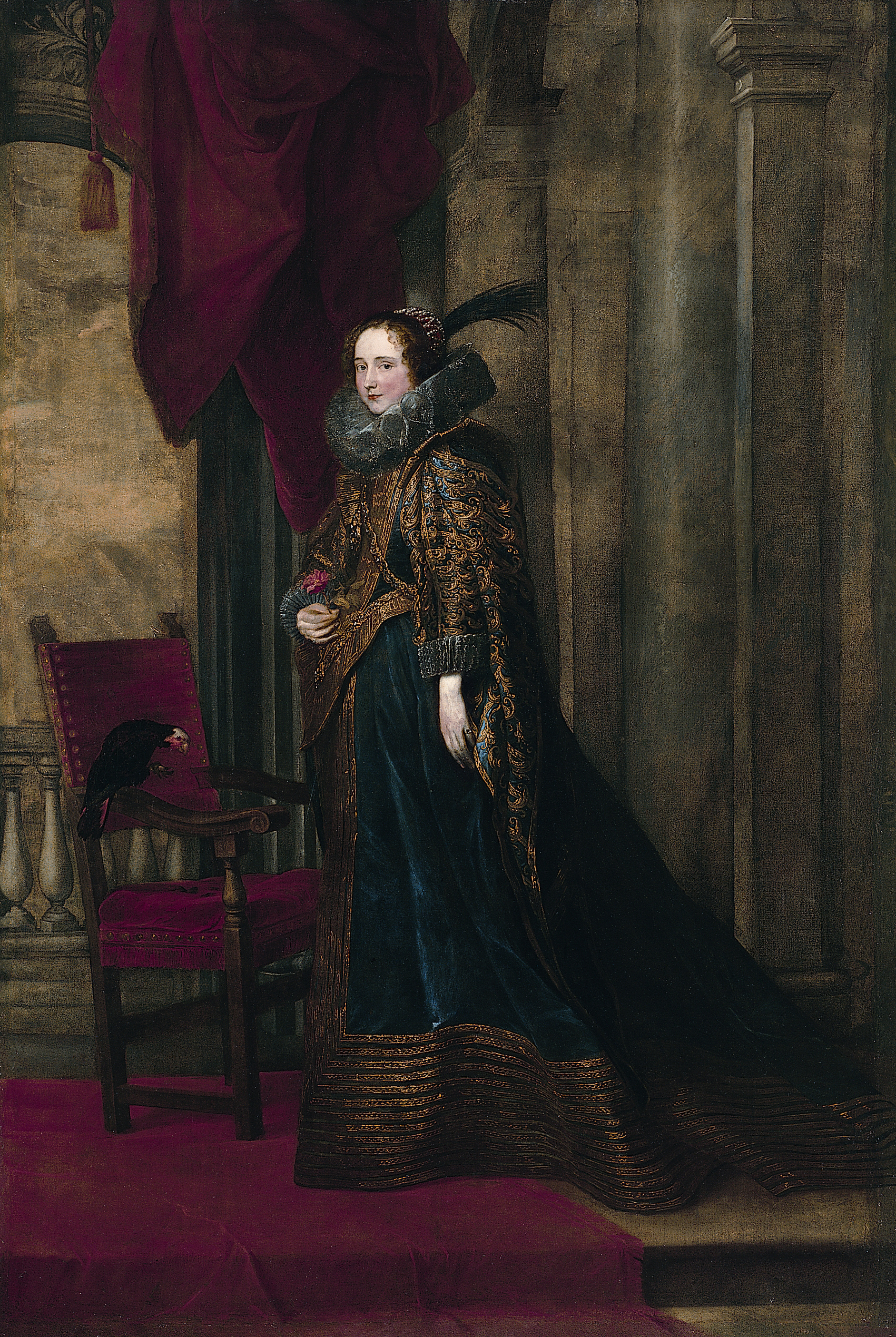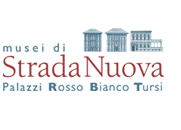
Click here to view image
Portrait of Paolina Adorno Brignole-Sale
Maria Brignole-Sale De Ferrari 1874 Genova - donazione
Van Dyck, Antoon
painting
1627 - 1627 - XVII
PR 51
Unità di misura: cm; Altezza: 286; Larghezza: 198
olio su tela
Cento opere di Van Dick - Genova - 1955<br>Van Dyck a Genova. Grande pittura e collezionismo. - Genova - 1997<br>Van Dyck - Anversa - 1999
The portrait of Anton Giulio Brignole-Sale, together with that of his wife Paolina Adorno, constitute one of the rare examples of en pendant portraits by Van Dyck that still remain together. They are also the only ones among the fifty from Van Dyck's Genoese period for which the specific payment recorded in the account books of the Brignole-Sale family in 1627 is preserved: with a third painting, depicting Geronima Sale Brignole with her daughter Aurelia, his mother and sister respectively, a total of 747 lire was paid to the painter in 1627-the final year of his Genoese sojourn. These are probably the last paintings executed by the Flemish artist in Genoa, the city where he arrived in 1621 as Rubens' “best disciple,” soon enjoying extraordinary success with the new city nobility, who, well aware of the even symbolic value of the images and the celebratory message they conveyed, competed to be portrayed by the young artist. They have always belonged to the family picture gallery and are the only ones to have remained in the residence of the family for whom they were painted. Ridolfo, son of the effigy couple, brought them to the Brignole-Sale family's new residence, Palazzo Rosso, after the mid-seventeenth century, where they remain today. In 1687 they were bought back by the cadet Gio. Francesco I, at a time when, his brother having died without male descendants, they would have ended up in foreign hands. The portrait of Paolina Adorno is the largest of the work by Van Dyck during his years in Genoa depicting a single female figure and follows a compositional scheme frequenty adopted by the artist during his career. In it appears, almost as a sort of compendium, all of typical stylistic features of his work: the presentation of a figure in both full and three-quarter length; the gaze turned towards the viewer; the setting in a space characterized by imposing columns, loggias and sumptuous red drapes; the presence of animals and, above all, magnificent attire such as the dress in which Paolina is depicted,rendered mimetically with a subtle blue colour to depict the fabric and with a more robust material, in yellow and white paste, to evoke the gold of the embroidery. Here Paolina is portrayed in her twenties, at the very height of her youth, but in the composition there is no lack of elements which, in addition to the merely decorative role, also contribute an allegorical element, for example looking at the parrot – a detail in which the collaboration of Jan Roos has been suggested – the bird’s feathers have fallen on the pillow, while the open rose, in the lady’s right hand is in full bloom. Both represent the transience of beauty which, like the rose, is destined to fade.




